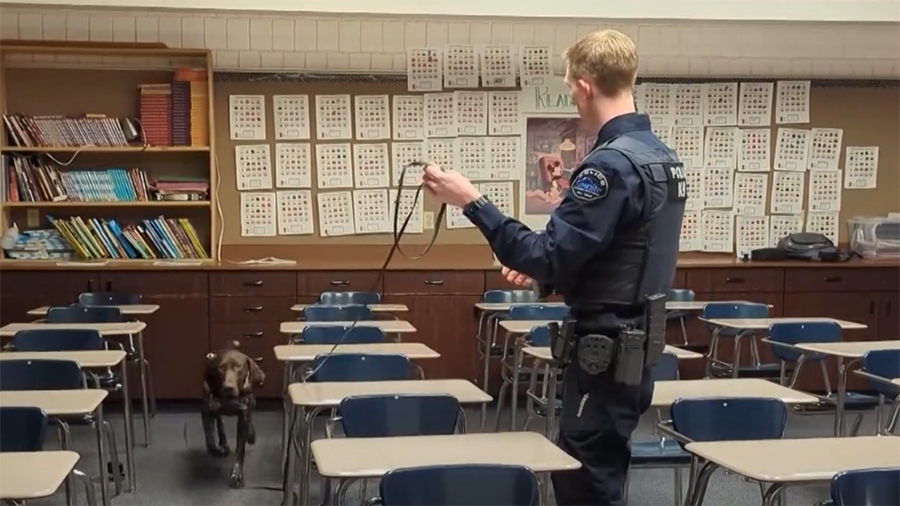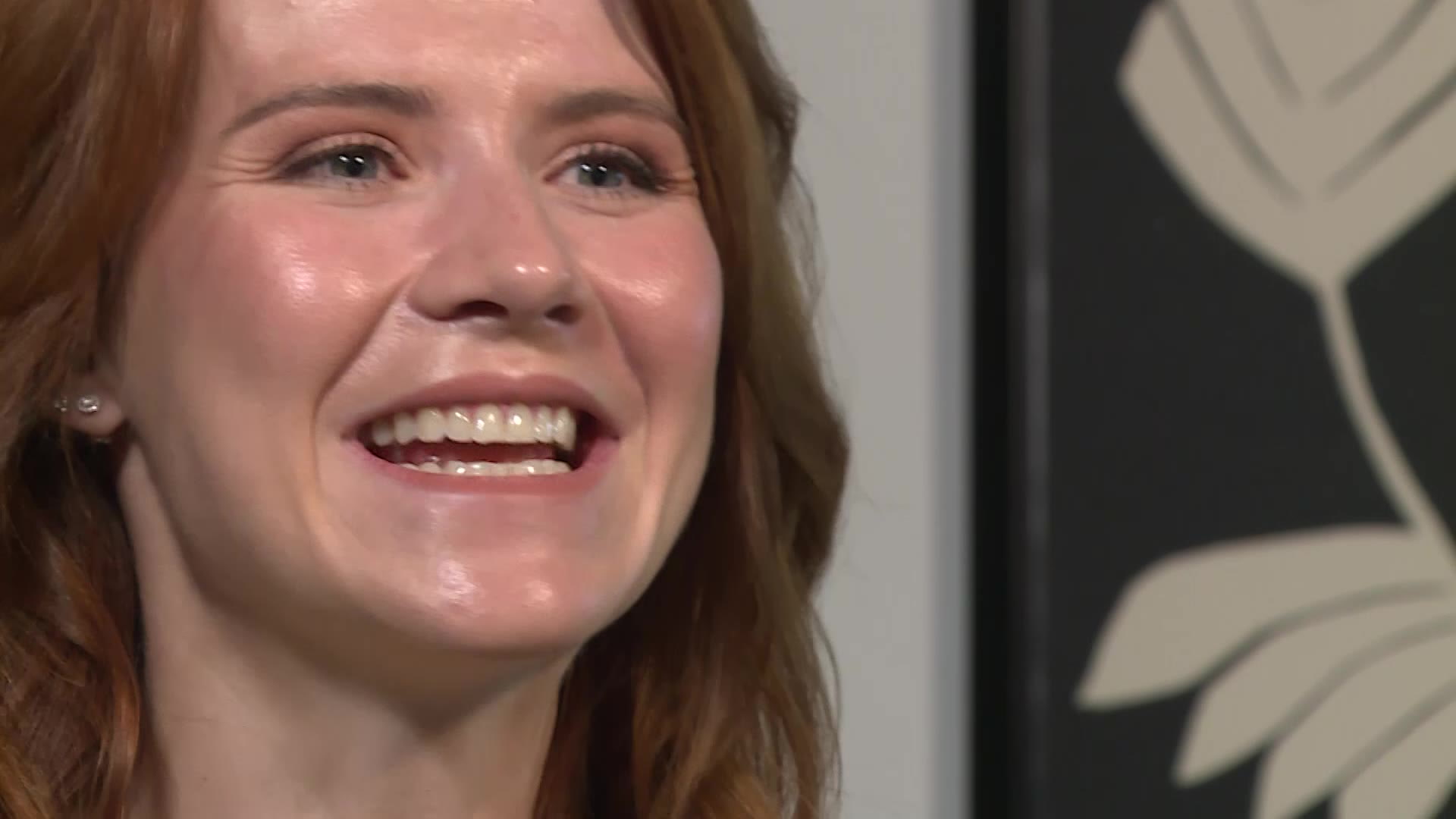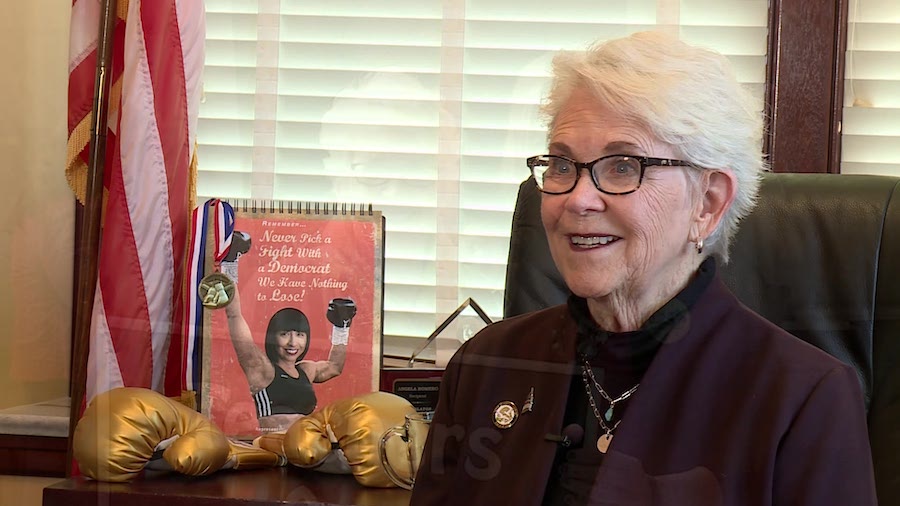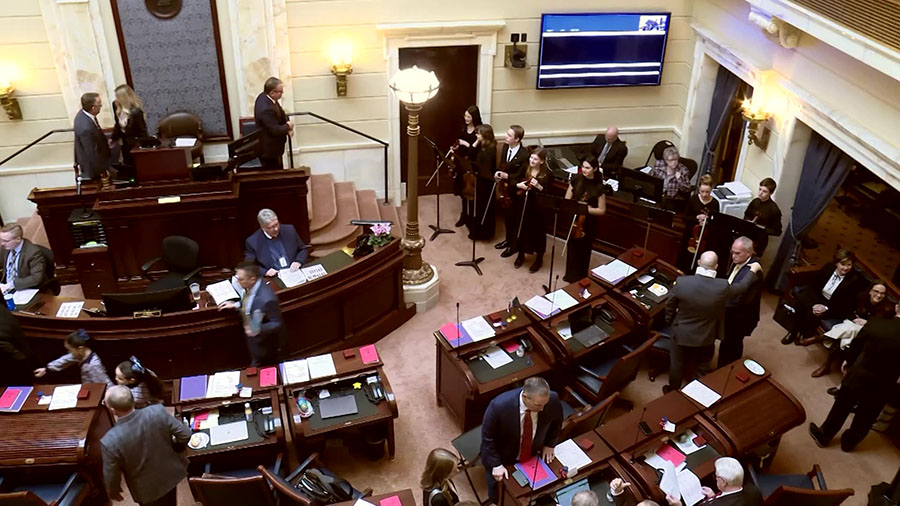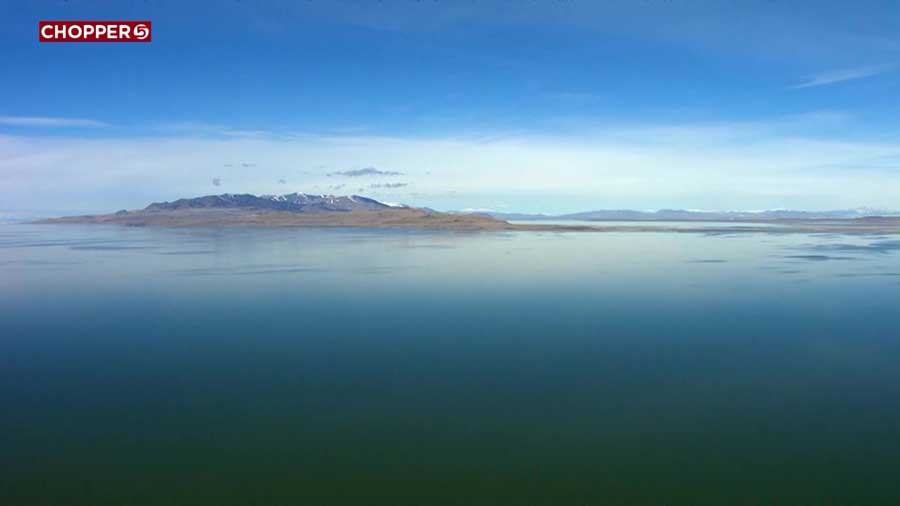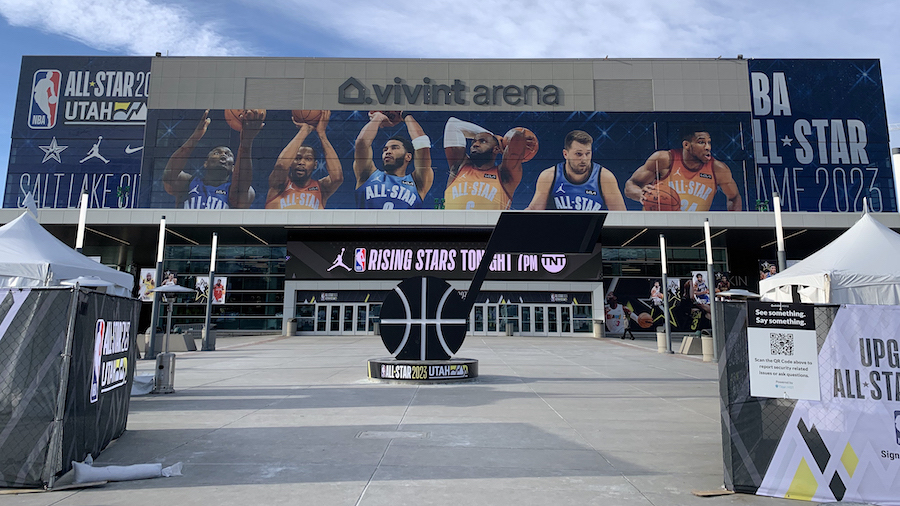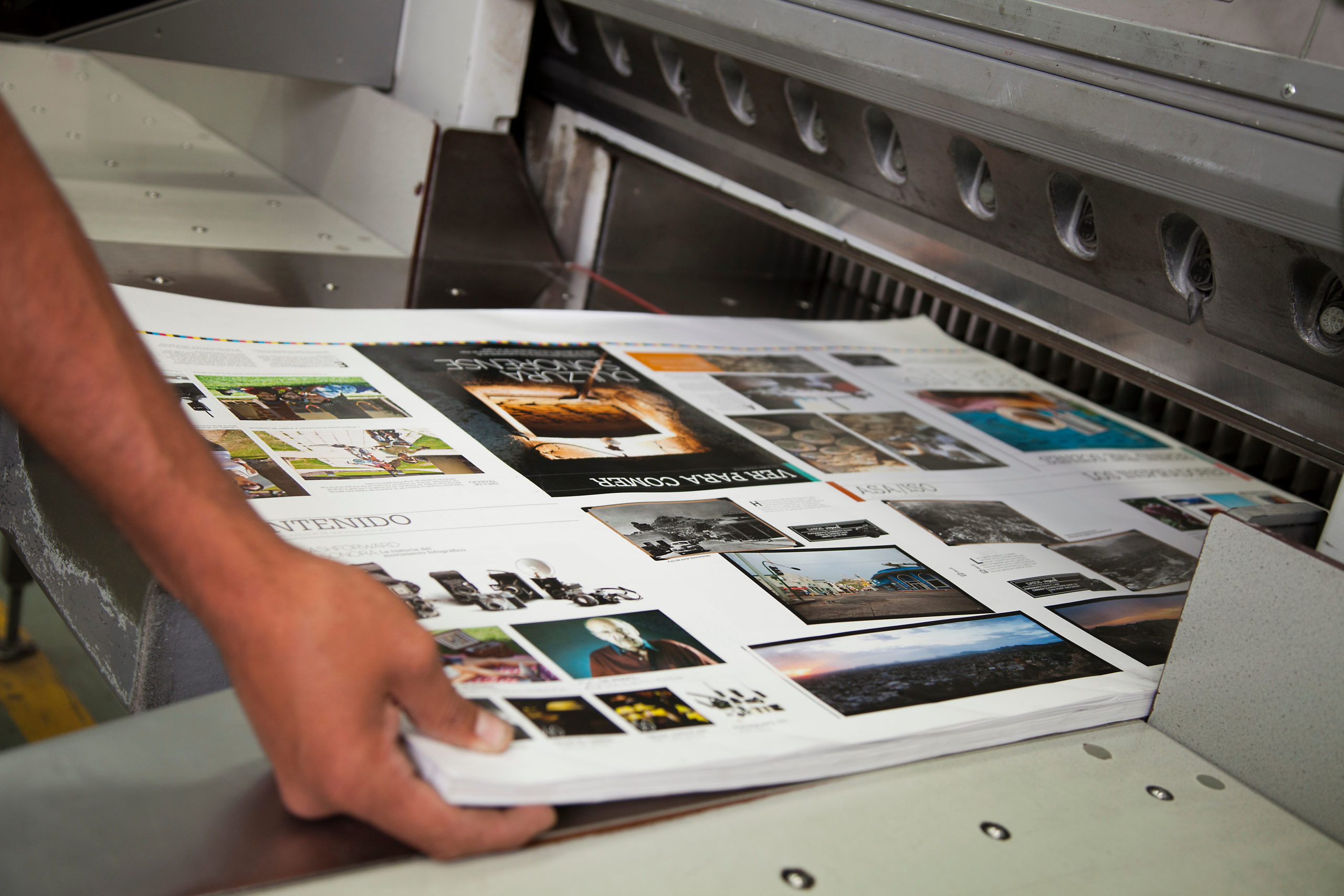KSL+
KSL+: Context surrounding redistricting battle
Nov 11, 2021, 6:35 PM
Public commenter: In terms of partisan neutrality, this map is not. It is a heavily partisan gerrymandered map
Matt Rascon: This week on KSL+…
Public commenter: Plus, there’s always going to be one group that feels like they’re under represented
Matt Rascon: a battle over boundaries.
Public commenter: The blatant tearing apart of Salt Lake County into four congressional districts in the disenfranchisement of minority voters does not demonstrate impartial decision making.
Public commenter: You have created a firestorm of opposition by treating the voters of Utah with disrespect. We want to know who drew the maps, what outside groups were consulted.
Matt Rascon: And what was the rationale for decision. The opportunity only comes once every decade, using new census data to reconfigure district maps for members of Congress, state legislators and school boards.
Rep. Paul Ray: It’s just an angry time politically. And you saw from some of the comments in there, you know how angry people are, you know, on both sides of the aisle. And it’s hard to have a redistricting year, when you’re in the middle of all the national fights that we’re in the middle of right now.
Matt Rascon: I’m Matt Rascon and this is KSL+. And this week, we’re focusing on the congressional map and the controversy surrounding it.
An independent commission submitted map proposals to the state legislative redistricting committee. But the committee instead supported a congressional map that divided up Democratic leaning areas of Salt Lake County. Even more at the time of recording this, the Utah House and Senate have voted to pass the congressional district map. And now goes to Gov. Spencer Cox for a signature in an internet Town Hall, Governor Cox said he’ll likely approve the maps the legislature picks.
Gov. Spencer Cox: I do not have plans to veto these maps. And there’s there’s some very specific reasons for that. And one being we’ll see what happens today that congressional map passed with a veto proof majority in the House, I suspect I’ve been told that the Senate has the same numbers, and will likely pass with the veto proof majority. i If there’s one thing you learn about me from these moments, I’m a very practical person, I’m not a bomb thrower. And and I believe in in good governance. And so I have been told that just just a veto, just for the sake of a veto is what is something that I should do. I just think that that’s a mistake. It’s a mistake for for lots of reasons. But the biggest of which is I get to work with this. And again, a veto proof majority is supermajority. And we have some incredible members of the legislature who have worked very hard on these I know it’s easy to, to speak of them and denigrate them. And and sometimes they deserve that. Most of the time they do not. And and it’s important for governor to have a very close working relationship with the legislature. I can’t pass laws, despite what I get told all of the time. I have zero legislative authority. And so I have to rely to get our agenda done. And we have some incredible things we’ll be working on. We’ll be talking about those over the next few months, we have we have a budget that that we need to get past that involves increases significant increases, that may be the most increases we’ve ever seen for education, specifically focused on our low income communities, in in our multicultural communities along the Wasatch Front, our at risk students and our rural students, um, you’re going to be seeing significant legislation around water and water conservation, all of these things that we need to do to lower the price of housing in our state, we have a really important agenda. And it would make sense it would not make sense to anger a supermajority of the legislature for it in a way that won’t change anything. And and make sure that we are focused on getting done that the the the agenda that the people of Utah want for the for the next decade. So that’s that’s what we’re going to be working on. But again, I understand the frustration, and that people are feeling right now. And and the place that that should be directed, is making sure that that we elect people that have the same interest that you do.
Matt Rascon: There is a lot of outrage over this process. You’ve probably seen it online, on TV. So how did we get here? And why does it all matter? Shelby Hintze is here to talk about it. She is our producer for KSL+ and Sunday Edition with Doug Wright. Thanks for being here, Shelby.
Shelby Hintze: Yeah, thanks. I’m excited to be here. This is this is my jam.
Matt Rascon: So, talk about what the legislature is trying to do right now.
Shelby Hintze: Yeah, so right now, the legislature every 10 years, they get the new census data that talks about population and where the population is located, what the growth has been all of those things. And so every decade, we have an opportunity to redistrict. A couple different things, you have congressional districts. So our federal representatives, and those are there are four, we can have four districts. And then there is a state legislator, this legislative district. So the House and Senate within state leadership, and then school boards. So right now, they’re building maps to build these districts that we’ll use for the next 10 years, until we have new census data.
Matt Rascon: And when I when I look at the question, you know, why does this all matter? Why should we care about the process seems like the, the answer I see the most is because representation matters.
Shelby Hintze: Absolutely. And that is what I think a lot of people are really frustrated with right now. And of course, there’s no, and this is something that every state struggles with, and everybody is trying to figure out the best way to do this. And it’s just a process that we’re all trying to go through right now.
Matt Rascon: So over the last few years, we’ll talk about the way we’ve been building these maps.
Shelby Hintze: Yeah, so in 2010, when we had our last round of census data, and there was a lot of controversy over how the maps got drawn. And in the Utah constitution, every state’s a little different. But the Utah constitution says that the legislature is the group that has the power to create these maps,
Rep. Brad Wilson: The legislature will do what the Constitution is charged us to do, which is ultimately select the maps that these elected officials feel like best serve the needs of the state.
Shelby Hintze: So in 2010, there was a bunch of controversy over this idea of gerrymandering. And these maps are supposed to be made without political consideration. And we’ll get a little bit more into that in a minute. But, um, you know, both parties, were saying the other party did shady things behind closed doors to make these maps. So we really are looking at how can we do this differently, more transparently, and in a way that allows more input from the public, while still following the Constitution, which says, says the legislature has final say. So the kind of what happened came out of that was in 2018, and a group called Better Boundaries put forward proposition four and that the goal of that was to create an independent redistricting commission. So there’s, the group is bipartisan, and the governor appoints someone, and the legislature appoints people, and they have to be people who aren’t politicians, or haven’t been in the last four years, there’s a whole list of criteria for them. And then they can build the maps and send them to the legislature and have the legislature pick them up. So in 2018, Utahns, voted, it was like 50% to 49%, and then some decimals on there, that got us over, um, but we voted to adopt this new method. And in the 2020 legislative session, however, the legislators said, No, we don’t want to do this. We, the Constitution says we have the power to do it. And so we should be the only ones who can work on this. We came to a bit of a compromise through a Senate bill that would allow the independent district redistricting committee to still be formed. And then the legislature could also form their own Redistricting Committee, and then they would vote on maps from the two committees. So that’s kind of where where, how we got to where we are today. Another important part of that as well, in the proposition four there was a statute in that, that if people didn’t like the maps that the legislature chose, they could sue the state and say, We need to change this. That provision was taken out and in 2020, so there’s not a lot of recourse now for if the legislature picks a map that people don’t support.
Matt Rascon: So if I’m understanding you, right, the the state legislature is not required to take these maps and approve the maps from this independent commission. But there are questions you know about okay, but this the map that they’ve put forward, gerrymandering, like you said, this is favoring one political party. I mean, I think that I don’t know, if we just take a look at the four districts, district fours, sort of the swing district, I guess you could say. Right? And is the criticism that with this new map, it just won’t be possible to even, you know, elect a Democrat?
Shelby Hintze: Yeah, I think that is the biggest criticism right now
Public commenter: It is bad enough that we have Salt Lake County cut three ways currently, under the new map, it’s going to be cut four ways, and there’s just no good reason for that. But you can keep Salt Lake City whole, you can keep most counties in the state whole or with very minimal splits. And this map doesn’t do that.
Public commenter: You literally cannot create four congressional districts and not divide up counties, you can’t do it.
Shelby Hintze: There’s a lot of concern with Salt Lake County, specifically, if you would like were to walk along 3900 south and go up a couple blocks and down a couple blocks. Within like a mile, you could walk through all four congressional districts. And so that is a concern for a lot of people, especially considering the fact and 90% of Utahns live in an urban or suburban area, that’s according to the census. So the legislative redistricting committee there, one of their big goals was to make sure that there was rura representation in every district, all four districts,
Public commenter: And this map represents a rural as well as urban. And we’re thankful for the things that you guys have put forward and all the work you’ve done.
Shelby Hintze: And that required chopping up Salt Lake County, significantly.
Rep. Mike Schultz: The legislature not only has statutorily responsibility for these maps, but we also have the constitutional responsibility for these maps. And that’s there for a reason. And this narrative out there that we didn’t listen to the the Better Boundaries, or the Independent Commission is just false. Because we did take some other ideas, incorporate them into the maps, I do know that the chairs looked at their maps, the commission members looked at their maps, the committee members looked at their maps. And in drafting the maps, they work together with I know cities, counties, all the elected officials, as well as as the independent commission. And then the Independent Commission didn’t do as big a job in doing that, I think, is what the redistricting committee did. And I think the redistricting committee did their job, as per the Constitution as well as state statute,
Shelby Hintze: When we build these maps. And there is the biggest rule is that they all have to have an equal number of people in each district. So one district can’t be larger than the other. And one of the goals of the Independent Redistricting Committee was to use something called communities of interest to also help build these districts. So Utahns could go in and submit something called a community of interest, which is a little complicated, because it doesn’t have an actual like, set definition. But the idea of it is, is basically, I’m keeping groups of people together that have similar interests. So maybe it’s a neighborhood that largely speaks Spanish, or it’s a neighborhood and a town and area, where many of the people are employed by the mining industry, and those kinds of things. And it could be socio economic, and ethnicity, all those kinds of things to try and to keep people with similar interests together as well. But one of the other concerns is, we don’t really know what the process was with the Legislative Committee, because the Independent Redistricting Committee had many, many public meetings, and they put out maps for people to comment on, and then they tweaked the maps from those public comments. And the legislative committee just kind of made their maps came forward and said, Here they are.
Public commenter: I don’t think it’s fair to say that you guys didn’t come out. And listen, I just don’t know that you listened. Well. So that’s something that we have to consider is I’m hoping you’ll you’ll listen to us a little bit today.
Rep. Brad Wilson: I think that there’s maybe an opportunity for us to help explain and, and let people understand that we have taken feedback from a lot of different folks that was part of the dialogue with the committee worked on as they drafted these maps. There’s a lot of considerations that were looked at not just from the Independent Commission, but from other folks. And so that’s that’s the process and elected officials in the legislature take their responsibility really seriously. To do what they think is right.
Shelby Hintze: The concern really is that there is no way in these maps for a Democrat to win. And we’ve seen that mathematically. Our colleague Garna Mejia earlier this week did a really great interview with Dr. Jarvis, who is a mathematician at BYU. And he ran, he was working with the Independent Redistricting Committee. And he ran their maps, as well as the legislative maps through a series of algorithms to determine what the likelihood of people being elected. And so I want to make sure we look at his interview a little bit, it’s a little long, but it’s really interesting.
Dr. Tyler Jarvis: We found that, that the Commission’s maps were fairly reasonable in their political distribution in the way in the way they respond to different elections and differences in the elections. Whereas the legislative committees map seems to be very strongly biased in favor of the Republican Party. So it does not respond well to changes in voter preferences.
Garna Mejia: Tell me a little bit about the process. What did you do? And how did you find this out?
Dr. Tyler Jarvis: So what we do is we draw 100,000 or more blind maps, so maps that don’t take any political information into account, but do try to take account of things that the Commission said, and that the the legislators legislature said in their, in the statute that set up the Commission, the things that they said were important, like avoiding county splits, and trying to be relatively compact, and so forth. So we draw a large number of these maps. And then after we’re done, then we look at how each of the maps responds to each of 10 different elections that the 10 most recent statewide elections that we’ve had in Utah, so some elections will be the voters will vote more in favor of Republicans and sometimes more effective, a stronger vote for the Democrats. And because of that, you’ll see some variation, up or down in the in the performance of the different maps, in terms of how many seats they would give to Republicans or Democrats.
So you’re creating all of these possibilities that could happen with with all of these different people, different voters, different candidates, right. And then you run a mathematical elections to see what those results would look like to give you an idea of what mathematically or statistically, our representation would look like in Washington, DC.
So it shows you what kinds of maps are possible or typical in Utah, if you’re not trying to play any games, I’m not trying to favor one party or another party. So when you look at it, if if if the maps, if the maps that are being proposed behave like that blind collection, that large blind collection, if they have similar distribution, then that that would indicate that they were not unfairly favoring one party or another. Whereas if they strongly favor one party much more than the blind maps do, then that shows that there’s some something unusual going on.
Garna Mejia: And so as you ran this forecast with 100,000, different possibilities, you found that you know, those results, what were those results? What did you find?
Dr. Tyler Jarvis: So this is looking at the 10 different elections. So the governor election in 2016, the Senate election in 2016, all the way up through the presidential election in 2020, the governor election in 2020, and so on. So for each of these elections, you have a different percentage of votes in favor of Democrats and Republicans. So the blue line shows the the actual percentage of vote in favor of Democrats in each of these elections.
Matt Rascon: Okay, just gonna jump in here real quick. If you’re listening to this and want to see these graphs that he’s mentioning, there is a link in the show notes to the video version of this where you can take a look
Dr. Tyler Jarvis: Of course, it’s impossible to give fractions of seats, right so one seat is the most seats that the Democrats would ever have. Among all these elections. The colored dots correspond to the the plans from the Commission and from the Legislative Committee. So the commission had had orange and purple, and then the end this public plan they call sh two. So there are those the orange, purple and red dots. And the blue dot corresponds to the Commission, the legislative committees plan. And you’ll see that, so for most of these plans, for example, the orange will sometimes give the Democrats a seat and sometimes not a seat, and then they get back here and back here and so on. And the red will pop up and down, and all of them sort of alternate back and forth. But the blue is always giving the Democrats zero seats and the Republicans all the seats, even when, even when there are more votes in favor of the Democrats, or it doesn’t really matter how many votes are in favor of the Democrats, you see the blue, always giving the same number of seats to the Republicans. So there’s just completely unresponsive to that change the changes in voter preference.
Garna Mejia: So what does that say to you, then?
Dr. Tyler Jarvis: I can’t speak to people’s intentions. But I can say this map is unusually unfair, or it gives undue favor to the Republican Party, which is something that was explicitly forbidden by the statute. They were that set up the commission that they were supposed to avoid undue favor. And when I see this, that that one that one party always gets all the seats, no matter what the election, and no matter how the the, the percentage of vote turns out, you always see this one not moving, even though the other plans move up and down, depending on on those things.
Matt Rascon: Thanks, a lot Garna for that information. And we want to bring back Shelby just for a couple more questions. As we take a look at this controversial congressional map. What, what what comes next after all of us? Yeah,
Shelby Hintze: so um, As of recording today, and the house in the Senate just voted on to approve these the legislative maps,
Sen. Stuart Adams: I look at this map, as having for Congressman representing Salt Lake City. What a powerful map, what a powerful, what a powerful record representation for our capitol city.
Shelby Hintze: So those will now go to the governor. And like we said a little bit earlier, and the governor said he is most likely going to vote for these. And the reason he gave for that, largely is that they passed by a margin that would be considered veto proof. So he could veto it, it would go back to the legislature, and then they would just re approve it. And it would just take more time, basically. And, you know, there’s arguments for and against vetoing something, even if it is veto proof, you know, to make a statement, and maybe that could change some legislators minds on if the governor doesn’t support it, all those kinds of things. But it doesn’t matter, because the governor has said, he is not going to do that. And he specifically said as well, if you don’t like what we’ve done, vote for different people. And of course, people are concerned with that thinking because when you have districts that are very difficult to elect people of different parties from especially, it makes it really hard to vote those people in even if that’s what you want to do. So now let’s just waiting on the governor, see what he says. And then we’ll move forward from there and, and it’s likely that these will be the voting districts that we’ll use for the next 10 years.
Matt Rascon: Shelby Hintze, thanks for joining us here on this week’s episode. Of course, she is always involved in every week’s episode, behind the scenes. Like she said, this is a decision that will impact us for years to come. And so it’s a story that I imagine is not going away. But that does it for us this week here on KSL+, I’m at Matt Rascon, and we’ll see you again next week.

